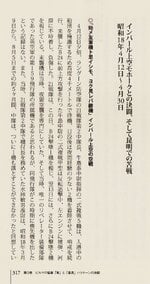- Thread starter
- #41
islandee
Airman
Okay. Thank you: I get the idea.There are nuance differences between Japanese and English.
Sentai (戦隊) is translated as Fighters Unit but "戦"(sen)" itself means Fighting.
There were many army sentais which were organized by bombers or attackers with no fighters.

